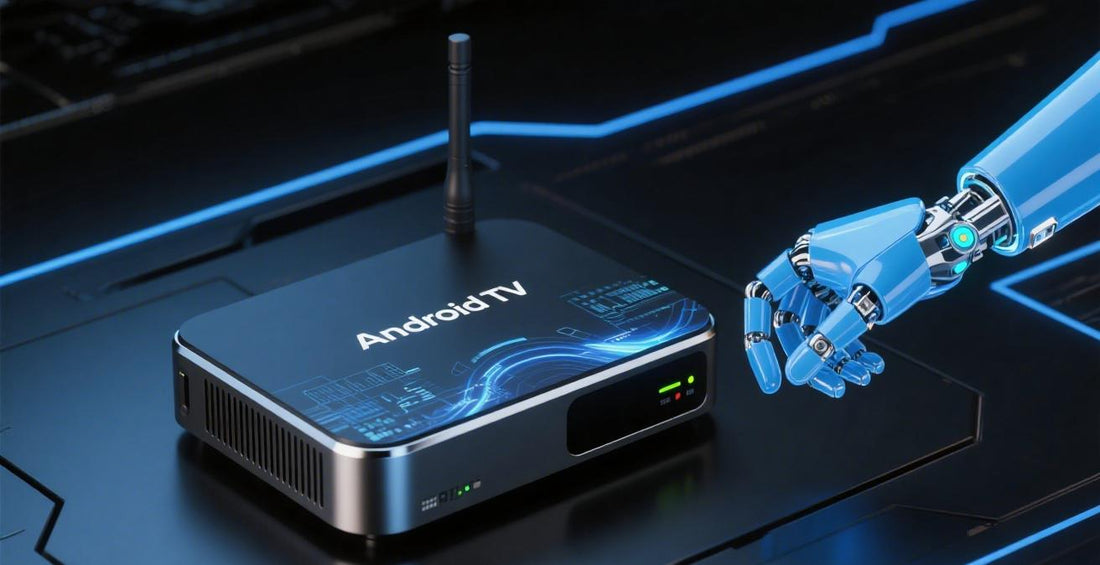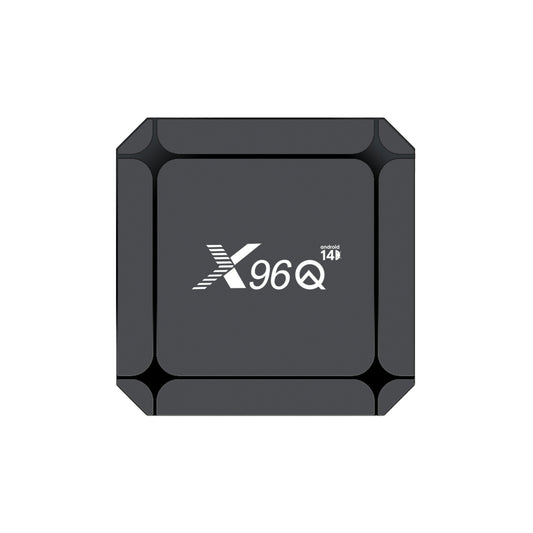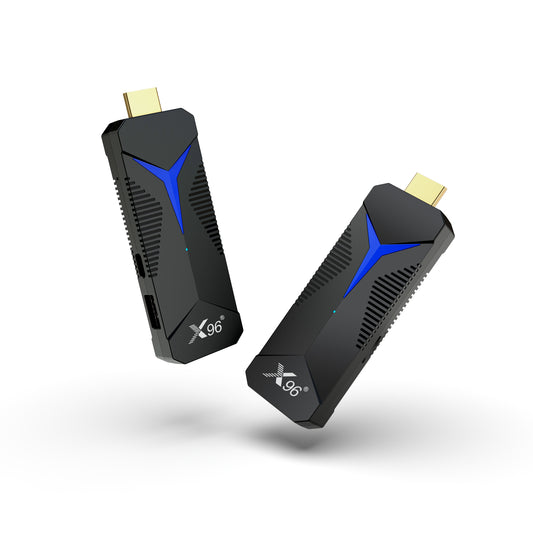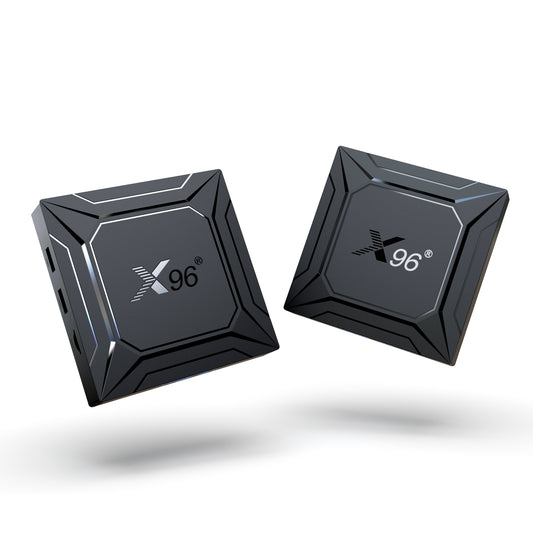
Android TV Streaming Box——What Are Streaming Boxes& How Do Streaming Boxes Work?
The Android TV Streaming Box is a versatile device designed to enhance your television experience by providing access to a plethora of streaming services and applications. But what are streaming boxes? How Do Streaming Boxes Work? These devices serve as a bridge between your TV and the internet, allowing you to stream content from platforms like Netflix, Hulu, and YouTube, among others. With features like voice control, customizable interfaces, and regular software updates, the Android TV Streaming Box is an essential addition for anyone looking to elevate their home entertainment setup and enjoy seamless access to a wide array of digital content.
1. What Are Streaming Boxes?
Streaming boxes are devices that connect to your television and allow you to stream content from the internet. They serve as a bridge between your TV and various online streaming services, enabling you to access a wide range of shows, movies, and other digital content.
Key Features of Streaming Boxes:
1. Internet Connectivity: Streaming boxes connect to your home Wi-Fi network or can be wired directly to your router, allowing them to access online content.
2. Access to Streaming Services: They provide access to popular streaming platforms such as Netflix, Hulu, Amazon Prime Video, Disney+, and many others, often through dedicated apps.
3. User Interface: Most streaming boxes come with a user-friendly interface that makes it easy to navigate through different apps and content categories.
4. High-Definition Playback: Many streaming boxes support HD, 4K, and HDR video playback, providing a superior viewing experience.
5. Voice Control: Some models include voice control capabilities, allowing users to search for content or control playback using voice commands.
6. Regular Updates: Streaming boxes often receive software updates to enhance functionality, improve security, and add new features.
7. Customization Options: Users can typically customize their home screen, organize apps, and set preferences according to their viewing habits.
2. Why do i need a Android TV streaming box?
From the perspective of end-users, using a android TV streaming box offers numerous conveniences and enjoyable experiences. Here are some key points:
1. Easy Access to Content
Android TV Streaming boxes allow users to easily access a variety of streaming services such as Netflix, Amazon Prime, YouTube, and more. With just one device, users can watch a wide range of movies, TV shows, and videos, eliminating the hassle of switching between multiple devices or channels.
2. User-Friendly Interface
Most streaming boxes are designed with intuitive user interfaces that enable quick browsing and searching for content. Whether looking for a new series or checking recommendations, the operation is straightforward, making it suitable for users of all ages.
3. On-Demand Viewing
One of the biggest advantages of streaming boxes is the flexibility of on-demand viewing. Users can watch their favorite shows whenever they want, rather than adhering to a fixed broadcast schedule. This freedom allows users to enjoy entertainment according to their own schedules.
4. High-Quality Viewing Experience
Many streaming boxes support HD, 4K, and HDR video playback, providing users with a superior visual experience. When watching, users can enjoy clearer images and richer colors, enhancing their overall enjoyment.
5. Voice Control Features
Some streaming boxes come equipped with voice control capabilities, allowing users to search for content or control playback using voice commands. This feature makes operation more convenient, especially when users are busy or multitasking.
6. Personalized Recommendations
Streaming boxes often provide personalized content recommendations based on users’ viewing history and preferences, helping them discover new shows and movies. This enhances the enjoyment and freshness of the viewing experience.
7. Regular Updates and New Feature
Streaming boxes receive regular software updates that introduce new features and improvements, ensuring that users can enjoy the latest technology and security. This ongoing support enhances the overall user experience.
8. Cost-Effective Option
For many users, streaming boxes represent a cost-effective choice, allowing them to select the services they want to subscribe to without the high fees associated with traditional cable TV.
3. How do streaming boxes work
From a configuration perspective, streaming boxes work by integrating various hardware and software components that enable them to receive, process, and deliver digital content to a television. Here’s a breakdown of how these components function together:
1. Processor (CPU)
The processor, or CPU, is the brain of the streaming box. It handles all the computational tasks necessary for running applications, decoding video streams, and managing user interactions. A more powerful CPU can handle higher resolutions and more complex tasks, ensuring smooth performance and quick loading times.
2. Memory (RAM)
RAM is crucial for multitasking and running applications smoothly. It temporarily stores data that the processor needs to access quickly. More RAM allows the streaming box to run multiple applications simultaneously without lag, improving the overall user experience.
3. Storage
Streaming boxes may come with internal storage for apps and downloaded content. Some models also support external storage options, allowing users to save movies, shows, or music directly on the device. The amount of storage available can affect how many apps can be installed and how much content can be stored.
4. Operating System
The operating system (OS) is the software platform that manages the hardware and allows users to interact with the device. Common operating systems for streaming boxes include Android TV, Roku OS, and Apple tvOS. The OS determines the user interface, app compatibility, and overall functionality of the streaming box.
5. Connectivity Options
Streaming boxes typically offer various connectivity options, including HDMI for connecting to the TV, USB ports for external devices, and Ethernet or Wi-Fi for internet access. A strong internet connection is essential for streaming high-quality content without interruptions.
6. Video and Audio Decoding
Streaming boxes are equipped with hardware or software decoders that process video and audio signals. They support various formats (such as H.264, H.265, and Dolby Digital) to ensure compatibility with different content sources. This decoding capability allows users to enjoy high-quality audio and video playback.
7. User Interface (UI)
The user interface is designed to facilitate easy navigation and access to content. It includes menus, search functions, and recommendation systems. A well-designed UI improves user experience by making it simple to find and watch desired content.
8. Remote Control and Voice Features
Most streaming boxes come with remote controls that allow users to navigate the interface easily. Some devices also support voice control features, enabling users to search for content or control playback using voice commands.
4. Where Can I buy a Android TV streaming box
Here’s a comparison of differences across sourcing channels (without mentioning specific brands):
1. Large General E-commerce Platforms
Features:
- Product Diversity: Covers mainstream, niche, and white-label devices with the widest selection.
- Transparent Pricing: Price comparison tools and frequent promotions (e.g., membership days, holiday discounts).
- After-sales Protection: Most offer 7-15 day return policies, some with official warranties.
- Flexible Logistics: Global/local delivery options with adjustable shipping speeds.
Use Cases:
- Comparing product specifications or user reviews.
- Seeking cost-effectiveness or specific features (e.g., 4G SIM card slots).
Representative Platforms:
- Global: Major international e-commerce sites.
- Regional: Leading domestic online marketplaces.
2. Vertical Electronics Retailers
Features:
- Specialization: Focus on smart hardware or home entertainment devices, offering curated selections.
- Custom Services: May include pre-installed software, technical support, or firmware updates.
- Niche Solutions: Better availability of specialized features (e.g., 4G/5G modules).
Use Cases:
- Requiring technical guidance or customization (e.g., bulk corporate purchases).
- Seeking non-mainstream features (e.g., dual SIM slots, high expandability).
Representative Platforms:
- Global: Tech-focused online stores.
- Regional: Local electronics specialty platforms.
3. Offline Retailers/Electronics Chains
Features:
- Immediate Availability: Purchase and test devices in-store, no shipping delays.
- Direct Support: Faster returns/exchanges and access to repair networks.
- Limited Selection: Typically stock mainstream brands or carrier-partnered models at higher prices.
Use Cases:
- Prioritizing reliability with in-person testing.
- Urgent needs or aversion to online purchase risks.
Representative Platforms:
- Global: Major electronics retail chains.
- Regional: Domestic appliance superstores.
4. Specialized 4G Android TV Box Sellers:
X96 TV Box Official Website:https://x96mini.com/
As a flagship innovation of Shenzhen Amedia Technology, the X96mini represents a paradigm shift in industrial electronics. Nestled in Shenzhen – China's Silicon Valley – our team has meticulously crafted the X96 series to fulfill a bold vision: transforming human-device interaction through intelligent engineering.
From conceptualization to execution, every X96 product embodies our commitment to merging industrial-grade reliability with consumer-friendly design. We are not just creating devices, but architecting an ecosystem where technology seamlessly integrates with daily workflows.




